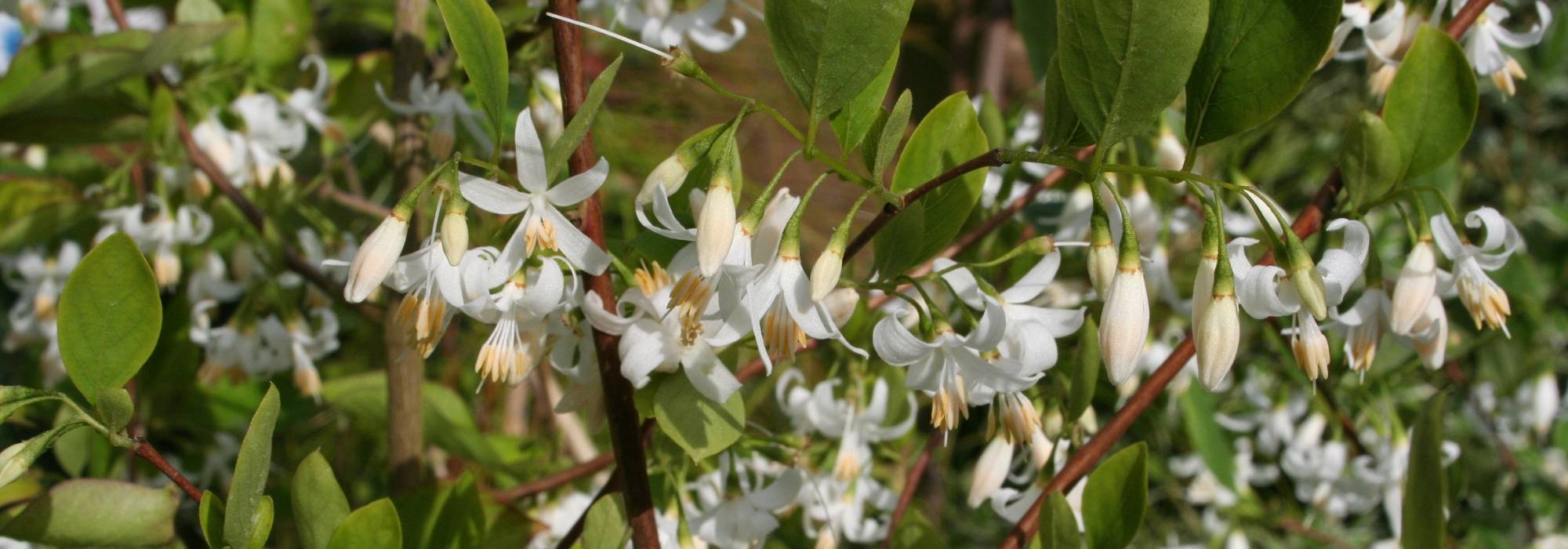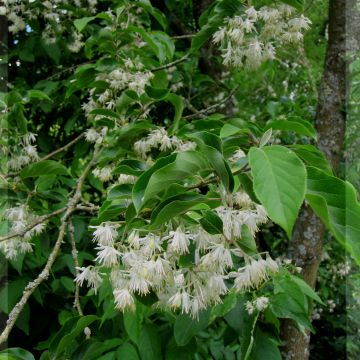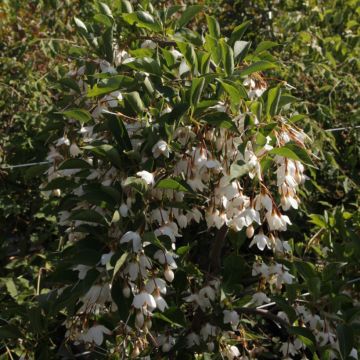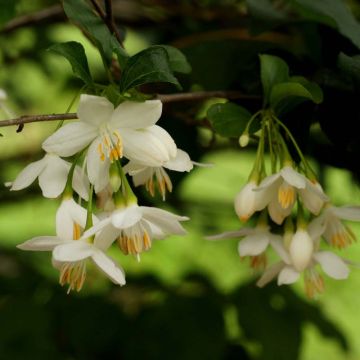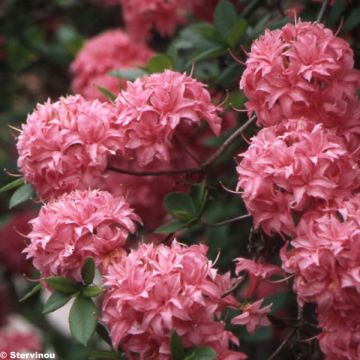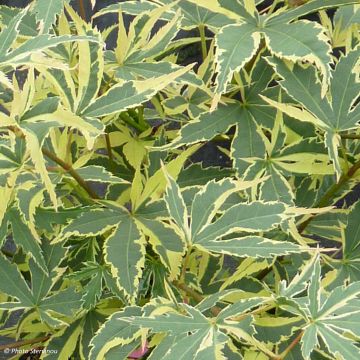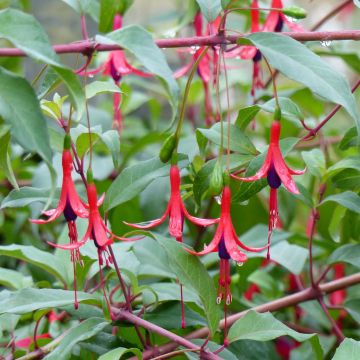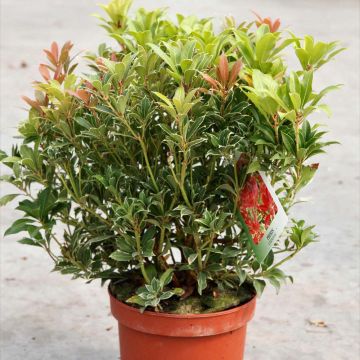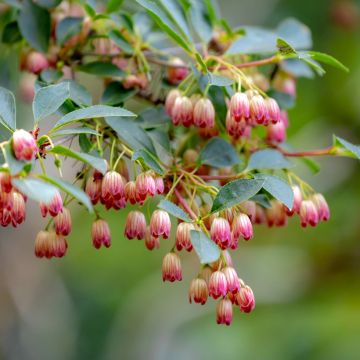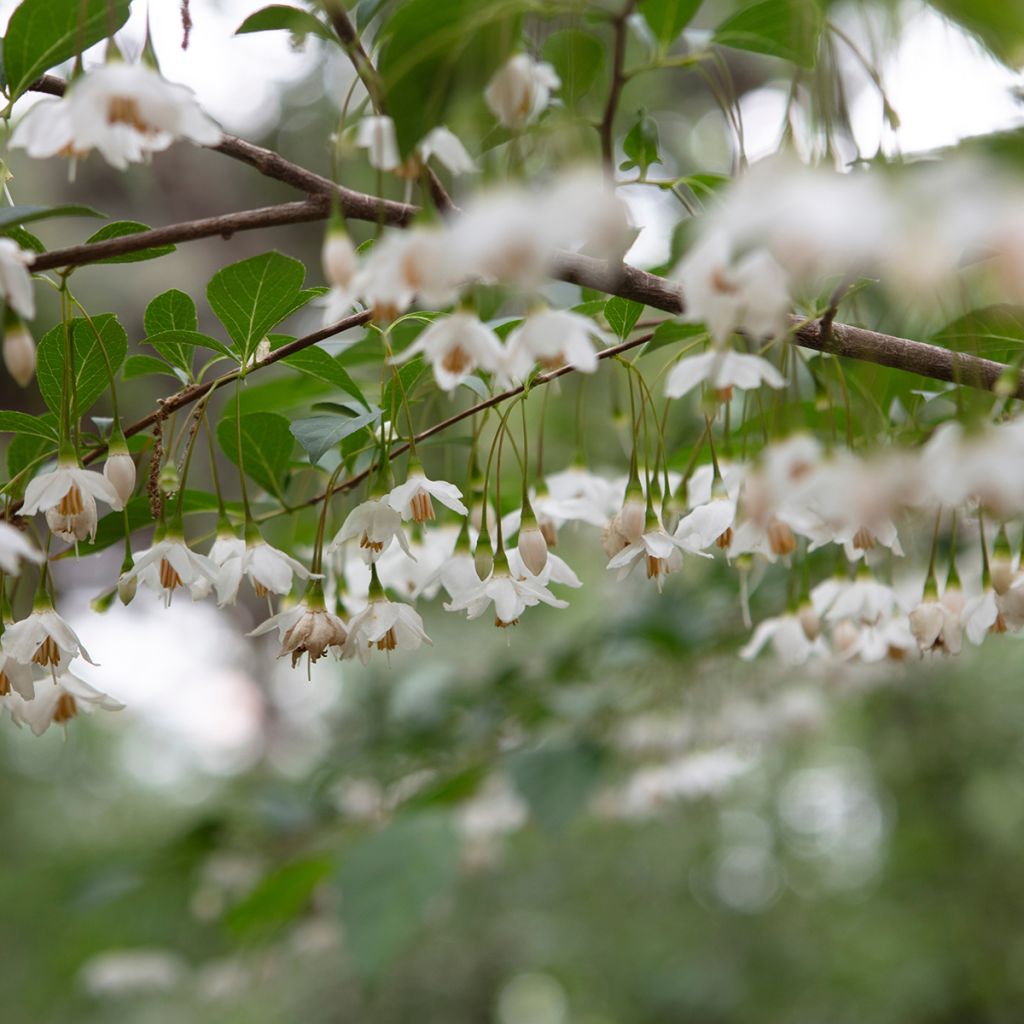

Styrax japonica Snowfall - Japanese Snowbell
Styrax japonica Snowfall - Japanese Snowbell
Styrax japonica Snowfall
Japanese Snowbell, Japanese Styrax
Special offer!
Receive a €20 voucher for any order over €90 (excluding delivery costs, credit notes, and plastic-free options)!
1- Add your favorite plants to your cart.
2- Once you have reached €90, confirm your order (you can even choose the delivery date!).
3- As soon as your order is shipped, you will receive an email containing your voucher code, valid for 3 months (90 days).
Your voucher is unique and can only be used once, for any order with a minimum value of €20, excluding delivery costs.
Can be combined with other current offers, non-divisible and non-refundable.
Home or relay delivery (depending on size and destination)
Schedule delivery date,
and select date in basket
This plant carries a 24 months recovery warranty
More information
We guarantee the quality of our plants for a full growing cycle, and will replace at our expense any plant that fails to recover under normal climatic and planting conditions.
Would this plant suit my garden?
Set up your Plantfit profile →
Description
The Styrax japonica 'Snowfall' is one of those unfairly unknown plants despite its ornamental interest. However, this variety of Japanese Styrax is a gem for the garden! This bush, well suited to small spaces, produces a particularly abundant white flowering in late spring in the form of small pendulous bells with a slight fragrance. And when autumn arrives, its deciduous foliage takes on beautiful yellow and orange colours to end the season in beauty. Hardy, this Styrax thrives in full sun or partial shade in moist, neutral, or acidic soil.
Native to Japan but also Korea, China, Taiwan, and the Philippines, it grows in humid forests on hillsides or mountains, in climates with hot summers. The Japanese Styrax is a deciduous bush of the Styracaceae family, composed of trees and shrubs with aromatic resin. Quite secretive, this plant family is not well represented, except for the Halesia carolina, the other genera being found only among collectors or in botanical gardens.
'Snowfall' is a horticultural variety selected for its abundant flowering, produced by the plant from a young age. It is a large bush that, after ten years, will reach 3m in height and 2m in width. Eventually, it will reach a height of 4-5m and a spread of 3-4m. It usually forms a short trunk, which branches relatively low, with upright branches forming an angle of about 45° with the trunk. The multiple branches create a dense crown, as wide as it is tall, with a slightly irregular appearance. It has a somewhat wild silhouette and is easily integrated into a natural garden. The dark grey bark is not particularly decorative but contrasts pleasantly with the white flowering. The dark green leaves, slightly glossy on the upper side, have a lanceolate to elliptical shape with a pointed tip. Carried by short petioles, they are small, measuring 4 to 5cm long, sometimes a little more.
From late May or June, and for approximately one month, the Styrax is covered with small white flowers. About 2cm in diameter, these flowers open into charming little bells, with the corolla deeply divided into five lobes. Grouped in small clusters of 3 to 6, they hang lazily at the end of a slender peduncle, giving them a pronounced elegance and romantic charm. The flowering is followed in late summer and autumn by fruits (drupes) similar to small grey olives. Finally, the foliage takes on beautiful yellow or orange colours before falling due to the first autumn cold.
This miniature tree is very hardy (-20°C) and can be planted in full sun, although it will appreciate partial shade in hot regions. It particularly dislikes drought and limestone.
This Styrax 'Snowfall' will generally thrive under the same conditions as Hydrangea macrophylla, with which it will perfectly coexist in a flower bed while adding a touch of originality. You can also associate it with Oxydendron arboreum or Sourwood, which is equally unknown. This bush of the same dimensions produces a summer flowering that will take over from the Styrax in the form of long, pendulous clusters of tiny white bells. In autumn, the foliage turns fiery red, enhancing your scene alongside the golden autumnal livery of the Styrax. At their feet, plant some Hydrangeas (Hydrangea), which will allow you to extend the flowering period of your flower bed with an almost inexhaustible choice of shapes and colours...
Plant habit
Flowering
Foliage
Botanical data
Styrax
japonica
Snowfall
Styracaceae
Japanese Snowbell, Japanese Styrax
Cultivar or hybrid
Other Styrax
View all →Planting and care
Plant Styrax japonica 'Snowfall' in spring or autumn, in partial shade or the sun, while avoiding the hottest exposures in the garden. The sun enhances the dark colour of the foliage. Like hydrangeas, Pieris, and camellias, it likes acidic, humus-bearing, moist, rich, and light soils. Choose a location sheltered from the wind. Hardy down to -20°C, Styrax japonica cannot tolerate limestone or dry and hot climates.
Planting period
Intended location
Care
Planting & care advice
This item has not been reviewed yet - be the first to leave a review about it.
Similar products
Haven't found what you were looking for?
Hardiness is the lowest winter temperature a plant can endure without suffering serious damage or even dying. However, hardiness is affected by location (a sheltered area, such as a patio), protection (winter cover) and soil type (hardiness is improved by well-drained soil).

Photo Sharing Terms & Conditions
In order to encourage gardeners to interact and share their experiences, Promesse de fleurs offers various media enabling content to be uploaded onto its Site - in particular via the ‘Photo sharing’ module.
The User agrees to refrain from:
- Posting any content that is illegal, prejudicial, insulting, racist, inciteful to hatred, revisionist, contrary to public decency, that infringes on privacy or on the privacy rights of third parties, in particular the publicity rights of persons and goods, intellectual property rights, or the right to privacy.
- Submitting content on behalf of a third party;
- Impersonate the identity of a third party and/or publish any personal information about a third party;
In general, the User undertakes to refrain from any unethical behaviour.
All Content (in particular text, comments, files, images, photos, videos, creative works, etc.), which may be subject to property or intellectual property rights, image or other private rights, shall remain the property of the User, subject to the limited rights granted by the terms of the licence granted by Promesse de fleurs as stated below. Users are at liberty to publish or not to publish such Content on the Site, notably via the ‘Photo Sharing’ facility, and accept that this Content shall be made public and freely accessible, notably on the Internet.
Users further acknowledge, undertake to have ,and guarantee that they hold all necessary rights and permissions to publish such material on the Site, in particular with regard to the legislation in force pertaining to any privacy, property, intellectual property, image, or contractual rights, or rights of any other nature. By publishing such Content on the Site, Users acknowledge accepting full liability as publishers of the Content within the meaning of the law, and grant Promesse de fleurs, free of charge, an inclusive, worldwide licence for the said Content for the entire duration of its publication, including all reproduction, representation, up/downloading, displaying, performing, transmission, and storage rights.
Users also grant permission for their name to be linked to the Content and accept that this link may not always be made available.
By engaging in posting material, Users consent to their Content becoming automatically accessible on the Internet, in particular on other sites and/or blogs and/or web pages of the Promesse de fleurs site, including in particular social pages and the Promesse de fleurs catalogue.
Users may secure the removal of entrusted content free of charge by issuing a simple request via our contact form.
The flowering period indicated on our website applies to countries and regions located in USDA zone 8 (France, the United Kingdom, Ireland, the Netherlands, etc.)
It will vary according to where you live:
- In zones 9 to 10 (Italy, Spain, Greece, etc.), flowering will occur about 2 to 4 weeks earlier.
- In zones 6 to 7 (Germany, Poland, Slovenia, and lower mountainous regions), flowering will be delayed by 2 to 3 weeks.
- In zone 5 (Central Europe, Scandinavia), blooming will be delayed by 3 to 5 weeks.
In temperate climates, pruning of spring-flowering shrubs (forsythia, spireas, etc.) should be done just after flowering.
Pruning of summer-flowering shrubs (Indian Lilac, Perovskia, etc.) can be done in winter or spring.
In cold regions as well as with frost-sensitive plants, avoid pruning too early when severe frosts may still occur.
The planting period indicated on our website applies to countries and regions located in USDA zone 8 (France, United Kingdom, Ireland, Netherlands).
It will vary according to where you live:
- In Mediterranean zones (Marseille, Madrid, Milan, etc.), autumn and winter are the best planting periods.
- In continental zones (Strasbourg, Munich, Vienna, etc.), delay planting by 2 to 3 weeks in spring and bring it forward by 2 to 4 weeks in autumn.
- In mountainous regions (the Alps, Pyrenees, Carpathians, etc.), it is best to plant in late spring (May-June) or late summer (August-September).
The harvesting period indicated on our website applies to countries and regions in USDA zone 8 (France, England, Ireland, the Netherlands).
In colder areas (Scandinavia, Poland, Austria...) fruit and vegetable harvests are likely to be delayed by 3-4 weeks.
In warmer areas (Italy, Spain, Greece, etc.), harvesting will probably take place earlier, depending on weather conditions.
The sowing periods indicated on our website apply to countries and regions within USDA Zone 8 (France, UK, Ireland, Netherlands).
In colder areas (Scandinavia, Poland, Austria...), delay any outdoor sowing by 3-4 weeks, or sow under glass.
In warmer climes (Italy, Spain, Greece, etc.), bring outdoor sowing forward by a few weeks.






























